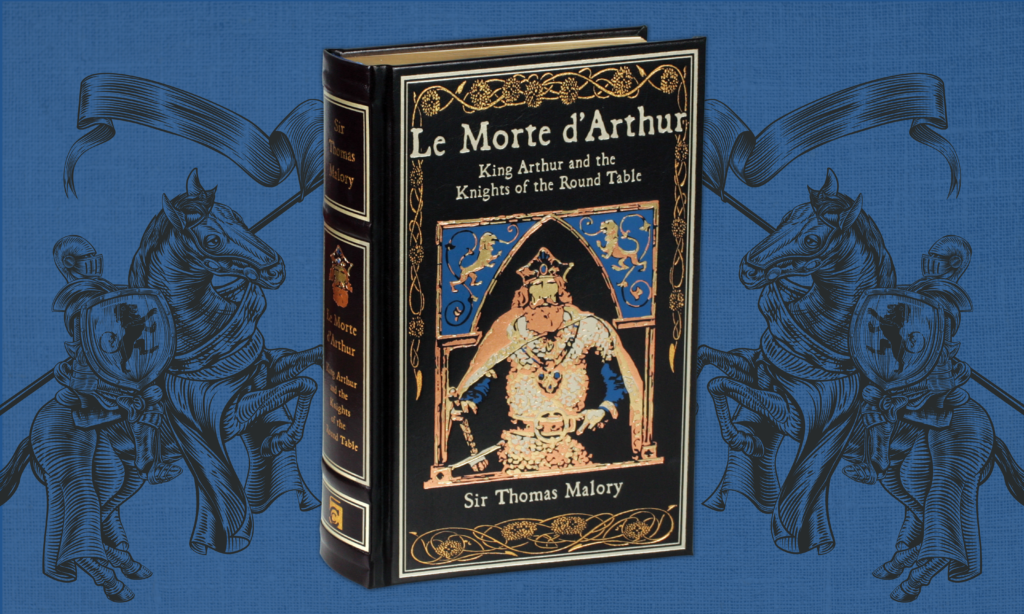
What's that you say? You're thinking about reading the Leather-Bound Classics edition of Thomas Malory's Le Morte d'Arthur? We encourage this. In case you need some trivia to seal the deal, here are a few facts you didn’t know that you didn’t know about the noble English king and his brave and loyal Knights of the Round Table.
Fact or Fiction?
No list of monarchs who ruled over England, Britain, the U.K., or any part of the British Isles over the past 1,000 years will yield an entry on “King Arthur.” These stories of knights, chivalry, good vs. evil, and the early political organization of Europe are almost entirely fictional. Historians say that the most likely inspiration for King Arthur was a sixth century warlord named Arthur, who led a group of Britons to successfully defend their land against a horde of invading Saxons (coming from what is now Germany) in a dozen crucial battles.
A Royal Mash-Up
One of those documented clashes was the Battle of Mount Badon in 518, but according to the firsthand account of historian Gildas, there were no leaders named Arthur on the battlefield. It’s more likely that the King Arthur of literature and legend is a composite of several tribal leaders active in Britain and Ireland in this period.
Not Even English!
King Arthur isn’t English, or rather, the stories made up about that have endured throughout the years about Arthur didn’t originate in England. The story of warlord Arthur was already a few centuries old, and heavily embellished, when a monk named Nennius wrote it all down in Wales in the eighth century.
From Legend to Letters
By the 1300s, Nennius’ account had become an orally-passed-down legend that proved especially popular in France, and in an old version of French. English writer Thomas Malory used the French version of the Welsh account of the British warlord to solidify the King Arthur myths and stories for an English audience, adapting it for a then-modern audience and rewriting it all to be as quintessentially and proudly English as possible. First published in 1484, Malory gave his book a French title, Le Morte d’Arthur, which translates to (spoiler ahead), “The Death of Arthur.”
A Reformed Writer
Thomas Malory, a noble who turned criminal and was imprisoned for years, occupied his mind and turned his life around by writing about the Arthurian legends. He did so in an old form of alliterative (repeated consonant sounds) poetry introduced to the British Isles by, ironically, the Saxons, whose invasion led to the creation of the Arthur stories.
Dive into the fancified history but totally true and important literary influence of the King Arthur legends with Thomas Malory’s Le Morte d’Arthur. The complete, epic story is available now from Canterbury Classics in a leather-bound edition, brave and true.








